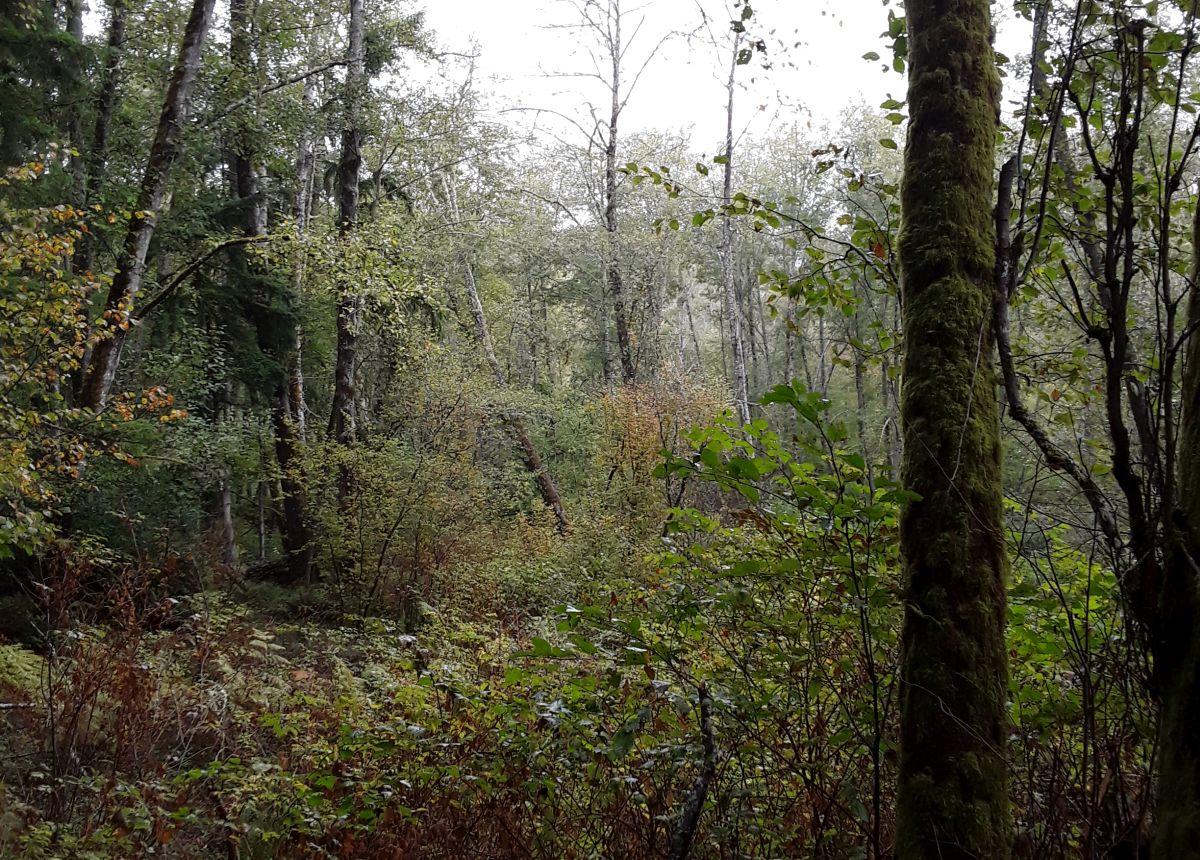Judd Creek Stewardship
Sun, March 06, 2022

The way in which a variety of factors come together to interact and affect one another is an inspiring element of ecology. The lay of the land and the components of which it's made drive the types of plants and animals that live on it, the way streams flow across it, and the way all these factors change over time. All of these factors affect, and ultimately interact with, the way humans choose to manage these lands. While this may seem obvious across landscapes, it can occur anywhere, even on the smallest of properties.
Resilient Forestry was contacted by a family on Vashon Island, WA in the fall of 2021 to help them develop a forest stewardship plan for their property. The landowners had purchased a home on 8 acres of land and wanted to develop a stewardship plan that met regulatory requirements and also expressed and promoted their values for the property. After an introductory phone call to learn more about their interests and goals for the property, we scheduled a time for me to come out to meet with them and tour the land.
Walking a property with a client is a wonderful way to learn about a client's values and management objectives. As we hiked up to the lookout area on the far end of the property, I learned that the families’ guiding principles regarding the management of their property were to use the lightest touch possible to maintain a functional ecosystem, provide habitat for wildlife, and to maintain recreational opportunities for visitors. Risk reduction was also an important factor driving management decisions for them, as their son loved to explore the woods in their backyard.
After my hike with the landowners, I performed a comprehensive forest inventory. The defining feature of this property was the slope, which influenced so much of how this forest had developed. Starting at a plateau at one end, the terrain dropped off quickly running down towards a stream that ran along the edge of the property on the other side. These steeper upland areas were home to some impressive Douglas-fir trees, likely remnant old-growth from a previous harvest. At the foot of these slopes closer to the stream conditions became much wetter. As the soil became more saturated, the forest type gave way to a shrub-dominated, red alder forest, with the occasional western redcedar. These species are much better adapted to these wetland conditions.
While red alder will capitalize on available growing space quickly, it doesn’t stay around long. Douglas-fir or western red cedar may live 300-500 years or more, yet red alder rarely lives past 80 years of age. The red alder forest in this wetland area was around 50-60 years old. Over the next few decades, these trees will begin to die. If left untreated these areas will become even more shrub-dominated.
Longer-lived species such as western redcedar will eventually reclaim the space left by the red alder. Active management including the planting of tree seedlings could accelerate this transition, which could lead to more desirable outcomes. The red alder will provide habitat as it dies, but also pose a risk to recreation. Shrubs provide great forage for wildlife but make it more difficult to recreate and provide less protection from erosion.
At the end of this project, we provided the landowners with a stewardship plan that met regulatory requirements. This plan highlighted the unique balance between the land and its ecosystem, our values as stewards, and the tools we have at our disposal to help direct this process.

